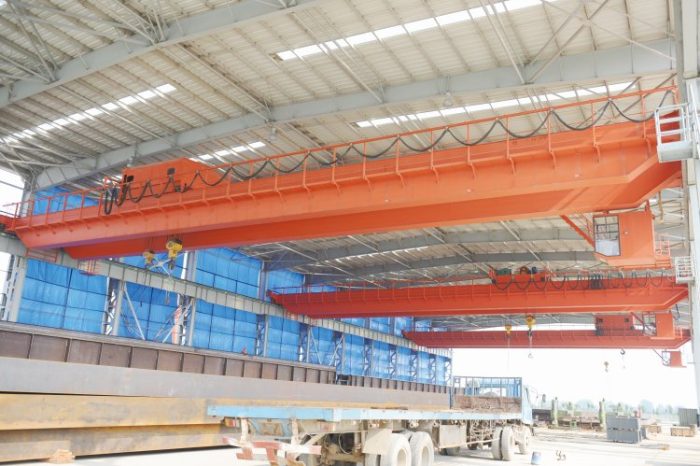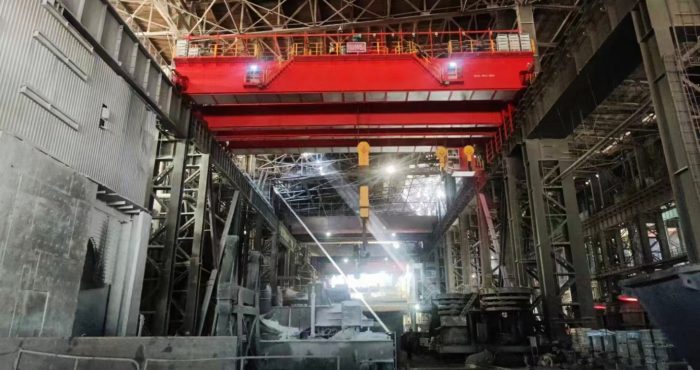In the dynamic landscape of modern manufacturing, efficiency is a critical determinant of success. Manufacturers continually seek ways to streamline processes, reduce costs, and enhance productivity. One pivotal tool that has proven indispensable in achieving these objectives is the heavy duty overhead crane. These cranes are more than just lifting devices; they are integral to the operational efficiency and safety of manufacturing facilities.
Enhancing Operational Efficiency
Heavy duty overhead cranes significantly enhance operational efficiency by optimizing material handling processes. In manufacturing environments where large and heavy components are common, the ability to move these materials swiftly and safely is crucial. Heavy duty overhead cranes provide this capability by transporting heavy loads across long distances within the facility with precision and ease. This reduces the time and labor required for manual handling, allowing workers to focus on more skilled tasks, thereby improving overall productivity.

Customization and Versatility
One of the standout features of heavy duty overhead cranes is their customization and versatility. Manufacturers can tailor these cranes to meet specific operational needs. Whether it’s adjusting the span, lift height, or load capacity, these cranes can be designed to fit seamlessly into any manufacturing environment. This adaptability ensures that the crane can handle a wide range of materials and products, making it an invaluable asset across various stages of the manufacturing process.
For instance, in the automotive industry, heavy duty overhead cranes are used to lift and move large car parts, such as engines and chassis, with precision. In the steel industry, they handle massive steel coils and beams. This versatility extends to the aerospace industry, where precision and reliability are paramount. The ability to customize these overhead cranes ensures they meet the exact requirements of different manufacturing sectors, thereby boosting operational efficiency.
Safety and Reliability
Safety is paramount in manufacturing, and heavy duty overhead cranes play a vital role in ensuring a safe working environment. These cranes are equipped with advanced safety features such as overload protection, emergency stop buttons, and automated systems that prevent collisions and accidents. By minimizing the risk of manual lifting and handling of heavy loads, overhead cranes reduce the likelihood of workplace injuries. This not only protects workers but also reduces downtime caused by accidents, further enhancing efficiency.
The reliability of heavy duty overhead cranes also contributes to their effectiveness. Designed for robust and continuous operation, these cranes undergo rigorous testing and maintenance schedules to ensure they remain in optimal working condition. This reliability minimizes unexpected breakdowns and disruptions, allowing manufacturing processes to proceed smoothly and without interruption. Heavy duty cranes usually adopt double girder bridge crane type to suit specific lifting requirements.

Maximizing Space Utilization
Space utilization is another area where heavy duty overhead cranes excel. In many manufacturing facilities, floor space is at a premium. By utilizing vertical space, overhead cranes free up valuable floor area, making the workspace more organized and less cluttered. This not only improves the efficiency of material movement but also enhances the overall workflow and safety within the facility. Workers have more space to operate, and equipment can be positioned more effectively, leading to a more streamlined manufacturing process.
Integration with Modern Technologies
The integration of heavy duty overhead cranes with modern technologies further amplifies their role in boosting efficiency. Advances in automation and control systems enable these cranes to operate with greater precision and reduced human intervention. For example, automated cranes can be programmed to perform repetitive tasks, ensuring consistent performance and freeing up human resources for more complex activities.
Moreover, the incorporation of data analytics and IoT (Internet of Things) technologies allows for real-time monitoring and predictive maintenance of overhead cranes. Sensors and data analytics can detect potential issues before they lead to breakdowns, enabling preemptive maintenance and reducing downtime. This technological integration ensures that the cranes are always operating at peak efficiency, contributing to the overall productivity of the manufacturing facility.
Conclusion
In conclusion, heavy duty overhead cranes are indispensable in boosting efficiency in manufacturing. Their ability to enhance operational efficiency, provide customization and versatility, ensure safety and reliability, maximize space utilization, and integrate with modern technologies makes them a critical asset in any manufacturing environment. As manufacturers continue to seek ways to improve their processes and remain competitive, the role of heavy duty overhead cranes will only become more significant. By investing in these cranes, crane manufacturers can achieve greater productivity, reduced costs, and a safer, more efficient working environment.
